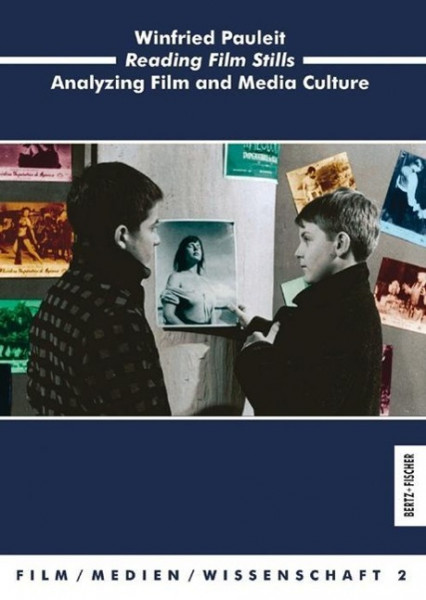
Reading Film Stills
Kurzinformation
inkl. MwSt. Versandinformationen
Artikel zZt. nicht lieferbar
Artikel zZt. nicht lieferbar

Beschreibung
Filmstandbilder sind Gebrauchsfotografien der Filmindustrie. Die Mehrzahl ist Massenware, aber manche erreichen den Status von Ikonen oder Fetischobjekten. Die Faszination von Film Stills besteht darin, ihre Betrachter »unmittelbar« zur imaginativen Vervollständigung einzuladen. Stills liefern die Ermächtigung, einen Film nachträglich zu bearbeiten und zu verändern. Sie sind das Einfallstor der Zuschauer. Das E-Book auf CD-ROM mit Filmausschnitten untersucht das Phänomen Filmstandbilder im Kontext von Film, bildender Kunst und Theorieproduktion, von den Anfängen im Stummfilm bis zur Medienkultur der Gegenwart. Seit den 1990er Jahren sind es Stills von Überwachungskameras, die zu Ikonen werden: Bilder von der Entführung James Bulgers (1993), von Lady Di im Hotel Ritz (1997) oder vom Attentäter Mohammed Atta am Flughafen (2001).Film stills are photographs that are used in the making of films or in advertising. Some achieve the status of icons or fetish objects. The majority is mass-produced, leading a shadow existence alongside the real attraction, film. Film stills today are primarily used in film journalism, At the same time, cinemas once showed film stills in display cases, and still do so in Europe today-film cuts, like slices of sausage displayed at the butcher.The fascination with film stills consists in inviting the beholder "directly" to complete them in their imaginations. Stills make it possible to work on a film or change it after the fact. They are a gateway for the spectator. This was already recognized by François Truffaut, who in his legendary film "Les 400 Coups" not only staged the theft of a film still, but also had the film end with a freeze-frame.This E-book on CD-ROM featuring film clips explores the phenomenon of film stills in the context of filmmaking, the fine arts, theory, and media culture. It sheds light on use of the still in film already in the context of silent film, for example in the case of Asta Nielsen, and explores how the film still was not only used as a means of advertising, but repeatedly became part of the plot, as can be seen in films by Preston Sturges, Otto Preminger, François Truffaut, or Chris Marker. After 1960, fine artists became interested in the use of the film still, as can be seen in the work of artists such as Richard Hamilton, John Baldessari, or Cindy Sherman, to whom individual chapters here are dedicated. The strategy used in the fine arts is the appropriation of film stills and the deconstruction of film. The theory of film and photography prepared the way for these strategies and accompanied them: Siegfried Kracauer's thoughts on the film still date already from the 1920s. In the 1970s, the still again became an issue, in particular in the writings of Roland Barthes, but also in the work of Laura Mulvey and Peter Wollen. This E-book engages with these theoretical positions and develops new methods of analysis for film and media studies in its examination of the film still. Finally, the film still surfaces in an altered form in media culture. Since the 1990s, stills taken by surveillance cameras have become icons: images of the kidnapping of James Bulger (1993), Lady Di at the Hotel Ritz (1997), or the terrorist Mohammed Atta at the airport (2001). The concluding chapter of this E-book deals with these stills and describes them as symptoms how the media saturate our lifeworld. von Pauleit, Winfried
Produktdetails

So garantieren wir Dir zu jeder Zeit Premiumqualität.
Über den Autor
Winfried Pauleit is professor at Universität Bremen and chairman of Bremer Akademie für Film und Medien. His most important publications: Das ABC des Kinos: Foto, Film, Neue Medien (2009; www.abc-des-kinos.de), Filmstandbilder: Passagen zwischen Kunst und Kino (2004).

- paperback
- 128 Seiten
- Erschienen 2007
- Evergreen

- Gebunden
- 252 Seiten
- Erschienen 2018
- Bertz und Fischer

- hardcover
- 103 Seiten
- Erschienen 2021
- Independently published

- Gebunden
- 322 Seiten
- Erschienen 2012
- ibidem

- hardcover
- 88 Seiten
- Erschienen 1994
- GALLIMARD

-
-
-
- Erschienen 2011
- Schroedel




 bestellen
bestellen
































